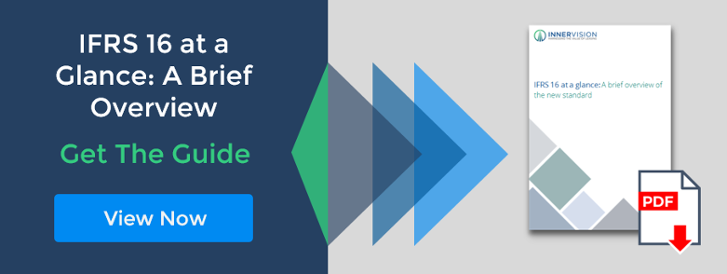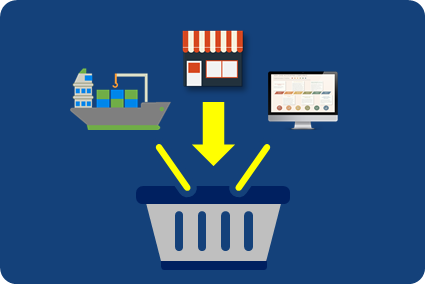Will companies still bother with leasing under IFRS 16?
Updated 26th May 2021 | 7 min read Published 2nd June 2016

Early 2016, the IASB published a new lease accounting standard, IFRS 16 'Leases'. The new standard which replaces IAS 17, has rekindled the many discussions surrounding how adding operating leases onto balance sheets will affect companies’ financial statements, KPI's and critical financial performance metrics.
With all the warnings of lease accounting preparation and the estimated US$2.8 trillion worth of lease commitments that will be added on balance sheet globally, the question at the forefront of many companies will be – “Is it really worth leasing then?”
Lease vs. Buy - An Age Old Debate
The answer depends on how your business utilises leases as an alternative form of asset finance. There are a plethora of benefits to leasing over buying and vice versa.
Many businesses choose to lease as it provides them instant access to the assets they require, but with the ability to pay back the cost of the asset over the course of the lease, staggering payments and thereby easing the pressure on a company’s cash flow.
Alternatively, buying an asset outright can seem simpler and cheaper without the need for contracts or gathering interest on payments. Having total ownership of an assets also provides your company with complete control to do whatever you'd like with the equipment.
However, buying the asset outright might not be the most appropriate use of a business’s working capital as often they will need to tie up lines of credit and put up large sums of capital to acquire the equipment needed. This capital could be utilised elsewhere within a business, for example; on marketing, operational reforms or on other business functions that can stimulate business growth. Not to mention that buying usually requires full payment upfront, which has a significantly larger impact on cash flows and balance sheets than spreading the cost over the life of a lease.
One of the main advantages to leasing is that it allows businesses to use valuable assets – such as vehicles, plant & machinery and technology – whilst they pay for themselves and also avoid technical obsolescence and the costs associated with asset refresh and replacements.
But what impact will the announcement of IFRS 16 have on the traditional benefits of leasing?
Despite the recent announcement, the economic and operational benefits of leasing will remain largely unchanged. Leasing will continue to provide a multitude of valuable financial and operational benefits to businesses all over the world.
- The accounting standards will not affect how leases spread the cost of an asset over the life of the lease, removing the impact that high initial purchase costs have on cash flows.
- The new standard also does not impact how leasing allows companies faster and more cost effective access to upcoming technologies and equipment that drive their business functions further and help them avoid technological obsolescence.
- Nor does it impact how leasing allows businesses the benefits of the right to use an asset, but without the costs and risks of full ownership.
- Leasing will continue to offer the same complimentary services provided by lessors such as favourable taxation, maintenance and uncomplicated asset disposals.
Generally speaking, leasing will still retain its appeal to many organisations as an alternate form of financing the procurement of assets required for a competitive and successful business.
What the new lease accounting standard will affect though is how leases are reported on in financial statements.
Adjustments to Accounting
For the most part, the operational implications of the new standard will generally amount to a mandatory accounting change that aims to give a more accurate and transparent representation of a company’s assets and liabilities.
Although there will be no change to the real assets or liabilities that arise from leasing, it will be clearer to investors and auditors, as operating leases are included in more than just the footnotes.
The biggest concern is amongst companies that rely on operating leases precisely for their current ability to remain as off balance sheet calculations under IAS 17 and FAS 13. This may only affect certain organisations, but the new lease accounting standards will mean this relief will no longer be available.
Therefore, it is likely that most businesses will not need to change whether they lease, but rather HOW they lease their assets.
Companies will be inclined to negotiate more favourable lease rates and beneficial end of lease terms, as well as applying appropriate lease vs. buy scenarios to ensure they are maximising the benefits that leasing provides.
For some companies, the new standard will bring about further relief, such as the revised definition of a lease, which will mean that some agreements currently considered leases will now be defined as services instead.
Seeing is Believing
The fact of the matter is that businesses will have to review the effectiveness of leasing on a lease by lease basis as part of the transition to the new global accounting standard. Only then will they be able to suitably evaluate whether their inclusion on balance sheet outweighs the operational and financial benefits leasing provides as opposed to buying assets outright and other forms of asset finance.
Companies who are concerned about the financial implications of bringing the assets and liabilities arising from their operating leases on balance sheet will need to begin the review process sooner rather than later in order to leave enough time to renegotiate and optimise their portfolio, in time for the date of official application – 1st January 2019.
Businesses who want to ensure total compliance to the new standard will have to produce retrospective comparative accounts for at least one fiscal year before the official date of application. This means they will need to have a clear understanding of both the new standard and their entire active lease portfolio by as early as 2017.
It is argued that the most challenging aspect of the new standard is not actually applying the accounting adjustments themselves, but the challenges associated with collating and systematising an entire lease portfolio, ready to apply the new mandatory accounting principles. Realistically this process will take upwards of 6 months to plan and execute; with the requirement to implement an electronic storage and management system for your business's lease portfolio, the deadline for beginning planning and data gathering is actually 2016.
Better Decisions Ahead
The lease vs. buy decision making process has been a staple of procurement activities well before the finalisation of the new lease accounting standards. Common sense has dictated that companies should review the benefits, consequences and costs of their asset financing options in order to get the best deal available at the most competitive, cost-effective rate.
Recognising virtually all leases and their associated assets and liabilities on the balance sheet is just another aspect to consider in the quest for effective procurement.
What the lease accounting changes will encourage, though, is a complete top to bottom review of a company’s internal leasing practices. Whether it’s reviewing the existing systems and processes currently in place, implementing advanced lease management software or evaluating the performance and effectiveness of an outsourced vendor, companies will have to be agile in their reaction to the changes.
This incentive to review internal leasing protocol will act as the perfect opportunity to optimise processes and drive operational reforms that are likely to yield savings, both from an operational and economic perspective.
To help with the transition to the new standard, many of the world’s leading brands are turning to lease management software as a means of optimising and collating their lease portfolio in one place. Innervision’s own lease accounting software, LOIS, provides lessees with one centralised platform to oversee and manage the entire transition. The software also incorporates an integrated IFRS 16 reporting functionality that helps generate the required retrospective comparative reports obligatory for compliance. More information about Innervision’s software, LOIS, can be found here.
If you require any additional information on the new standards, you can download the below eBook – IFRS 16 at a Glance
Alternatively, you can call Innervision’s leasing experts and see how our specialised lease management services and software can help you comply with IFRS 16: +44 (0) 20 7283 9422
Share this article:









